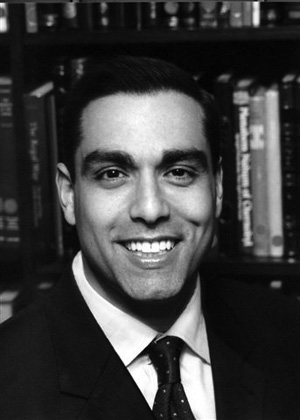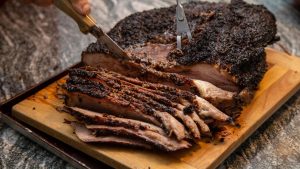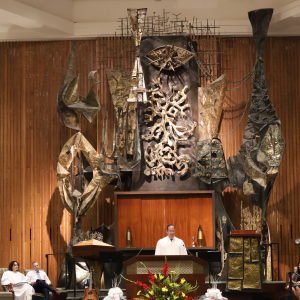The human is a tree of the field: the quest for rootedness
Published August 22, 2012
The Sages of Rabbinic Tradition posit that there are 613 Mitzvot (Commandments) and that each of these Divine Decrees finds its origin in a particular scriptural verse*1. And though generally speaking the proof-texts cited appear plausible, I never cease to marvel at the Rabbis liberal use of a technique known as “Asmachta,” best translated as the creative, courageous and often ingenious lengths to which these visionary leaders were willing to go, to “get the hermeneutic job done.”
This week, in Synagogues the world-over, the Torah Portion of Shoftim will be read. The accepted understanding is that from this single Parshah we derive no fewer than 41 distinct “Heavenly Injunctions” (a disproportionate number considering that there are 54 discrete sections in the traditional Judaic Lectionary). Among them is the famous command known in Hebrew as Bal (or Lo) Tashchit – Do Not Destroy: “When you besiege a city for many days to wage war against it and to capture it, you shall not destroy its trees by wielding an ax against them. You may eat of them, but you shall not cut them down. For are the trees of the field human, who might withdraw before you into the besieged city?”*2
ADVERTISEMENT
At first blush, this command seems to be limited to a specific moment in time, a specific set of circumstances – when one is waging war, in the heat of a battle. Yet, our Sages take creative license and use this particular passage as the locus classicus, the authoritative source, for the far-reaching dictate not to destroy. In fact, the 19th century Neo-Orthodox German Rabbi, Samson Rafael Hirsch, goes so far as to categorize Lo Tashchit” as: “…the most comprehensive warning to human beings not to misuse the position which God has given them as masters of the world and its matter to capricious, passionate, or merely thoughtless wasteful destruction of anything on earth. [This Command calls out to the human and says] Be a Mentsch (literally, a fully evolved human- being)! Only if you use the things around you for wise humane purposes, sanctified by the word of My teaching, only then are you a Mentsch and have the right over them which I have given you as a human. However, if you destroy, if you ruin, at that moment you are not a human… and have no right to the things around you.”*3
Rabbi Hirsch’s powerful declaration got me thinking about the term Mentsch and how the 2nd section of the abovementioned citation might be instructive in operationialzing and applying the term for our contemporary predicament. “For are the trees of the field human….?” What if we were to read this verse (as the medieval Biblical Exegete, Rabbi Abraham Ibn Ezra suggests) as a statement rather than as a question? What if a sensitive and nuanced reading of this passage leads us to consciously draw useful and instructive metaphorical parallels between a human-being and a tree? What might we learn about the often elusive quest for Mentschlichkeit (living like a Mentsch) from the words “For the trees of the field are like a human…”?
Surely, there are many lessons to be gleaned in the comparison, however, the one that seems most crucial (at least to me) in this “Bowling Alone”*4 era of unparalleled isolation and alienation is the notion of rootedness. Just as a tree cannot survive without its subterranean life-preserving roots, so too the human will wither and ultimately perish without deep sources of sustenance. And yet, as the French mystic-philosopher Simone Weil reminds us: “To be rooted is perhaps the most important and least recognized need of the human soul. It is one of the hardest to define. A human being has roots by virtue of his real, active and natural participation in the life of a community which preserves in living shape certain particular treasures of the past and certain particular expectations for the future.”*5
Being a Mentsch — like being a tree — means recognizing, honoring and relying on the centrality and consequence of our roots. It demands that we consciously set aside the urge to be self-centered and self-absorbed. It calls on us to battle the ubiquitous seduction to live our lives in seclusion and isolation and instead seek out ways to create meaningful relationships and bonds with others, in community. It necessitates living in ways that are respectful of the places from which we have emerged and which exhibits an eagerness to experience the new heights and vistas that have yet to be attained. It obliges us to always be respectful of difference and diversity and simultaneously cognizant of that which unites us all. It requires that we proclaim and demonstrate the dignity of our particularity while at once acknowledging the necessity of universalism, our fundamental interconnectedness. And just as we must create rootedness in our human communities, so too must we arrive at a deeper understanding that we live interdependently with all of creation. Otherwise, our shared roots will quickly dry up and life’s beauty will fade and wither.
ADVERTISEMENT
The “tree of the field” which serves as the source for the Biblical directive of Lo Tashchit (Do Not Destroy) compels us to pursue radical and ennobled rootedness so that we can attain the status of Mentschen and thus enjoy the Divine blessings of growth, vitality and flourishing which have graciously been gifted to us by the Root of all Roots and the Source of all Sources.
Citations:
*1Babylonian Talmud, Tractate Makot 26B
*2Deuteronomy, 20:19
*3Horeb, Chapter 56, Section 397
*4Robert Putnam, Bowling Alone: America’s Declining Social Capital
*5Simone Weil, The Need for Roots, Page 41















